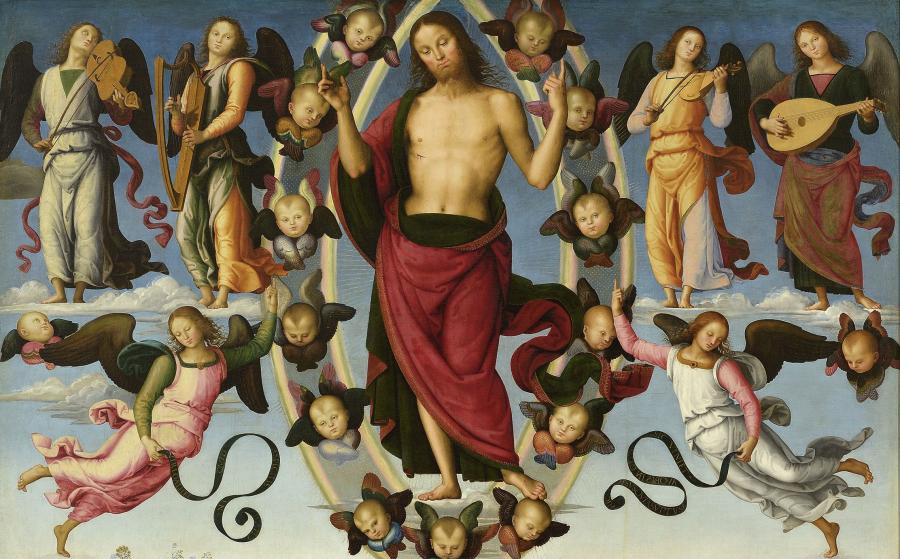The Ascension of Christ
Information sur l’artiste
Le Pérugin (Pietro Vannucci, dit il Perugino) [Città della Pieve, vers 1450 - Fontignano, 1523]

L'Ascension du Christ, 1495-1498.
Image © Lyon MBA - Photo Alain Basset
At the request of the Benedictine monks of the city of Perugia in 1495, Perugino devoted three years to creating the main altarpiece for their church.
In his contract, the delivery date, iconography and materials to be used were precisely described. Although the complete altarpiece originally included fifteen elements, only the central panel and the lunette, representing the Ascension of Christ, are preserved in the Lyon Museum.
Laid out within an essentially two-dimensional space, the composition is organized symmetrically around a central axis that runs from earth to heaven, flowing through the gestures and gazes of the Virgin Mary, Christ and God the Father. The twelve apostles and Saint Paul, a leading figure of the early Church, stand at each side of the Virgin Mary. Above them, we see Christ inside a mandorla. Between heaven and earth, angels play music or pray to God the Father. Behind the group, a panoramic landscape painted according to the rules of aerial perspective extends to the horizon. In the blue-shaded distance, we perceive a small fortified town next to a river that winds through a mountain valley. The rhythmic regularity of the figures, their graceful poses and placid faces, and the luminous intensity of contrasting colors create an image that is both imposing and subtle. With this altarpiece, Perugino has perfected a classical style that prefigures the art of his student, Raphael. 1495-1498
1495-1498
Oil on wood, transposed to canvas
H. 325; W. 265 cm
Donation of Pope Pius VII, 1816





